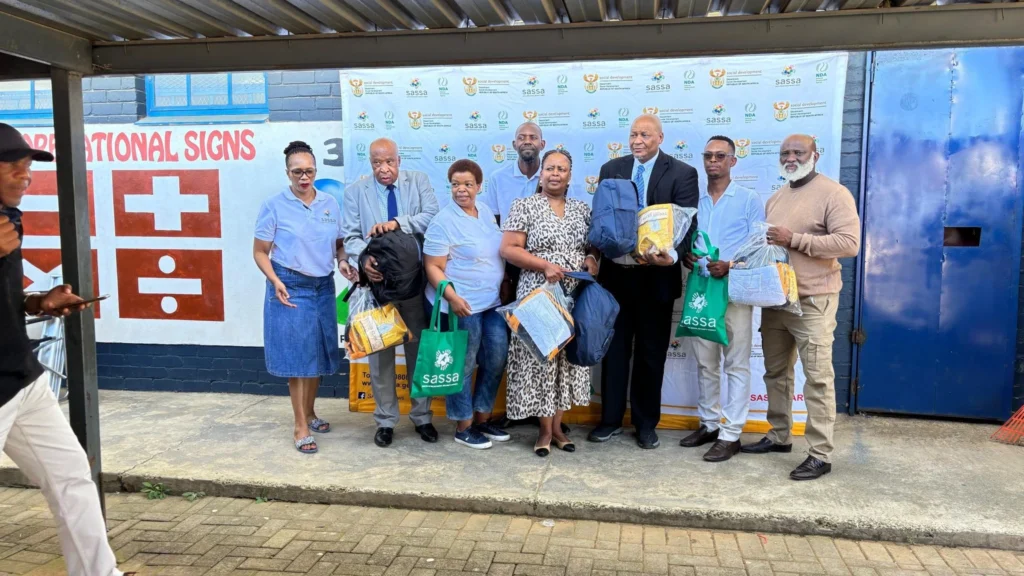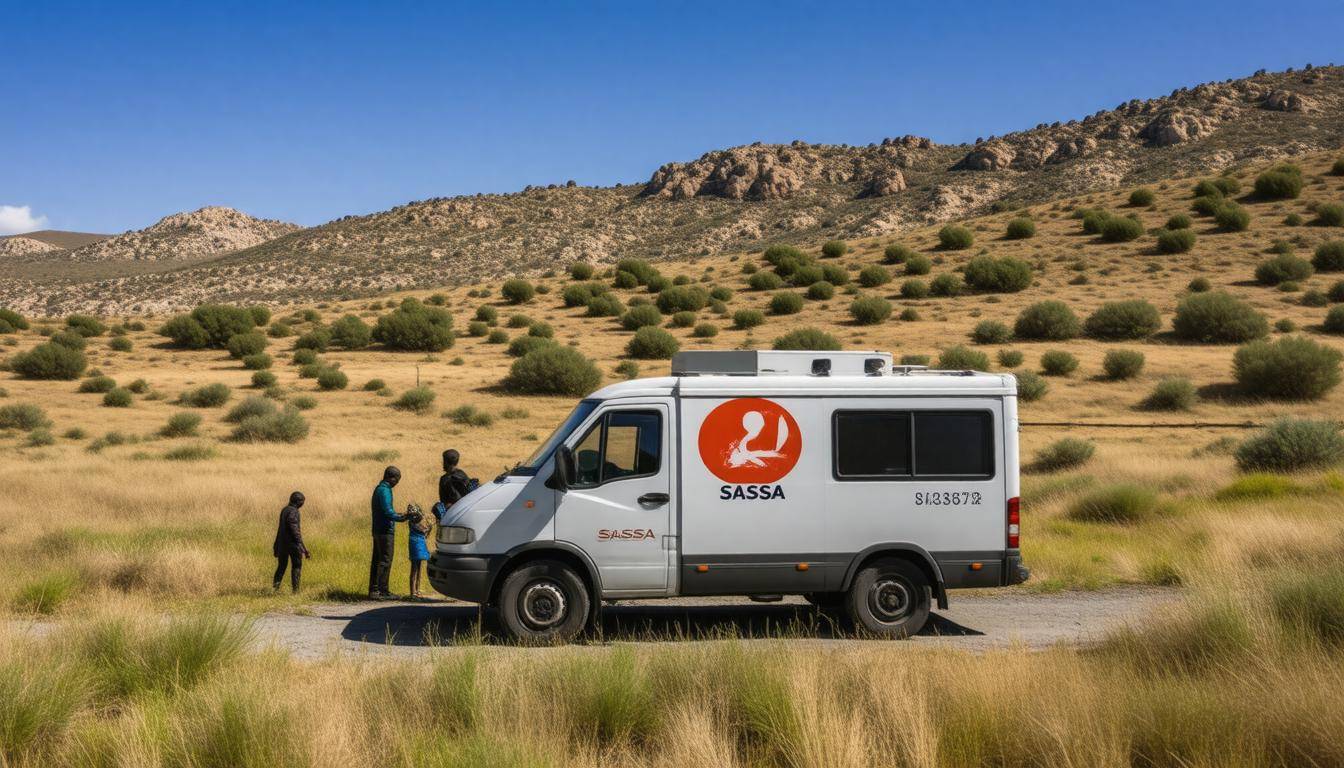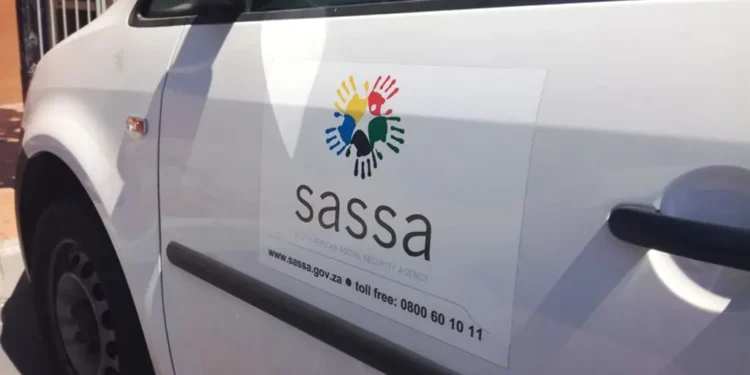Accessing essential services in a country as vast and diverse as South Africa can be a major challenge for many, especially in rural areas where government offices are often miles away. It’s not just about distance; it’s also about the resources needed to make that journey, especially for people who require R350 to survive monthly.
The good news is that change is happening. Enter the SASSA Services on Wheels initiative—a program that directly brings social security assistance to those who need it most. This innovative solution is more than just a service; it represents hope and accessibility for countless families seeking support.
By taking services on the road, SASSA is revolutionizing how communities interact with social support systems, making the process simpler and more effective than ever before.
SASSA Services on Wheels refers to a mobile initiative by the South African Social Security Agency that brings essential services directly to communities, ensuring that individuals who may not have easy access to traditional service points can receive assistance with applications and queries related to social grants. This program is designed to enhance accessibility and convenience for beneficiaries in rural and underserved areas.

Overview of SASSA Services on Wheels
The SASSA Services on Wheels initiative is a testament to the agency’s commitment to making social security assistance widely accessible to all citizens, especially those in rural or underserved areas.
Imagine living in a place where the nearest SASSA office is very far away. This program addresses this issue by bringing essential services right to the doorsteps of families that need them most.
These mobile units serve as a connection point for many people previously cut off from crucial social support mechanisms.
Benefits for Rural Communities
One of the significant advantages of SASSA Services on Wheels is its emphasis on targeting remote populations who have traditionally faced barriers to accessing government benefits. Many rural families struggle not only with long distances but also with unreliable and often transportation options. By providing these mobile units, SASSA reduces the burden of both challenges by offering much-needed help while bringing services closer to home.
The benefits include:
- Reduced travel time for beneficiaries accessing social grants
- Increased awareness through localized outreach efforts
- A more personalized approach to social security solutions
Geographic Reach of Mobile Units
The SASSA Services on Wheels program has made remarkable strides in reaching individuals across South Africa in remote and rural areas. This initiative is important for residents struggling with transportation barriers, making it difficult to access standard SASSA offices. Areas within Eastern Cape, Limpopo, and KwaZulu-Natal have been highlighted for their accessibility challenges. Here, mobile units serve as lifelines to serve areas often difficult to reach
In the Eastern Cape’s rugged mountainous landscapes, where steep terrains deter effective transportation, SASSA’s mobile units visit these underserved areas bi-weekly. This regularity ensures that isolated individuals are not left behind when accessing essential services.
As reported in 2024, these dedicated mobile units have already serviced over 80,000 beneficiaries in hard-to-reach locations within just one year of operation. This number encapsulates hope and assistance to those who might otherwise be forgotten.
By prioritizing these communities, SASSA Services on Wheels exemplifies how focused efforts can bridge gaps in service delivery, transforming lives through better accessibility.
Each trip made by these mobile units reflects a deep understanding of the needs of vulnerable populations. However, reaching these areas is only part of the equation; the value lies significantly in on-site support—ranging from assistance with social grants to providing information on other essential services.
Recognizing the geographic reach highlights just one aspect of this initiative; the true effectiveness resides in the various forms of aid provided directly to those in need. Next, we will explore the diverse range of services made available to beneficiaries.
Comprehensive Services Provided

The SASSA Services on Wheels covers an impressive array of social security services designed to meet the diverse needs of beneficiaries right at their doorsteps. At the heart of this initiative lies a commitment to bringing essential assistance closer to those who truly need it, reducing travel burdens and ensuring timely access to vital resources.
Types of Services
The first major service offered is grant applications. Residents can easily apply for various social grants, including child support, disability benefits, and old-age pensions without worrying about long trips to distant offices. Imagine being able to fill out the necessary forms and submit them right in your neighborhood—this convenience significantly eases the stress many face when seeking financial assistance.
Another important aspect of the service is card replacements. Losing a social grant card can happen to anyone, often at the most inconvenient times. However, with SASSA’s mobile units, individuals can receive immediate replacements right at their location. This swift response reduces frustration and makes sure that beneficiaries continue receiving their benefits without unnecessary delays.
Besides these key services, beneficiaries can also benefit from inquiries and updates regarding their applications. This means they can check on the status of a submitted application or update personal information directly with a representative in their community. Feeling cut off or uninformed can have negative effects; thus, having direct communication with SASSA agents helps with transparency and builds trust.
“The mobile unit helped me apply for a disability grant without needing to travel long distances. It was a lifesaver.” – Mrs. Ndlela, a resident in a rural village in KwaZulu-Natal expresses just how significant these services are to her daily life.
With such varied and immediate access to these important services, it becomes necessary to evaluate how well this program addresses the needs of its beneficiaries when implemented in more remote areas.
How effectiveness is Sassa on Wheels in Remote Regions?

The accessibility provided by mobile units in these areas is not just theoretical; it’s tangible. The program’s effectiveness shines through when you consider the 25% increase in social grant applications from rural communities during the first half of the year. This growth illustrates a significant breakthrough for those who previously found it challenging to navigate the often daunting journey to brick-and-mortar offices.
Community leaders like Sibusiso Mabaso have expressed their gratitude for this innovative approach. “The mobile units have drastically reduced the travel burden on our community members,” he notes.
This statement reflects a common sentiment among beneficiaries who benefit from reduced commuting times and logistical hurdles. Instead of spending hours or even days travelling, families can now access essential services right in their neighbourhoods.
The underlying success of these mobile units lies in their ability to deliver immediate support while addressing long-standing gaps in service delivery. Traditional SASSA offices may be located far away from many communities, often forcing applicants to plan cumbersome trips that are financially and physically draining.
By bringing services directly to them, mobile units ensure that people receive assistance promptly, thereby reducing pressure on conventional office operations and minimizing backlogs.
This approach transforms what used to be a laborious process into a streamlined experience. Rural residents find themselves able to easily meet SASSA’s application requirements without embarking on lengthy trips.
Yet, while we celebrate these advancements, it is important to acknowledge that challenges accompany this commendable initiative that must be addressed moving forward.
Addressing Challenges and Criticisms
As efficient as the mobile assistance program may seem, it has its hurdles. For one, logistical issues can seriously disrupt the service’s efficiency. Think about it: if a mobile unit is supposed to arrive at a specific location to assist beneficiaries, delays caused by poor road conditions or traffic can thwart the entire operation. Not only does this frustrate those waiting for their assistance, but it also limits the number of people who can be helped in a single day.
A well-timed service relies heavily on the condition of access roads, and when those roads fall short due to inclement weather or neglect, the beneficiaries pay the price.
Imagine a beneficiary eager for support—perhaps she needs immediate help with her application or urgent financial aid—watching as the clock ticks by with no sign of help. This scenario underscores logistics and the emotional impact on individuals relying on these critical services.
Key Challenges
Another layer of complexity arises from technical difficulties inherent to portable systems used in mobile units. It’s common to encounter technical glitches, which can result in frustrating service interruptions. Consider how inconvenient it would be for both staff and recipients alike if a system crash occurred right in the middle of an important transaction! Such disruptions can lead to delays that ripple out far beyond the initial problem, causing dissatisfaction among users who might have travelled long distances to access help.
These technological failings emphasize a larger need for consistent evaluation of device performance, ensuring that workers have reliable tools at their disposal.
Moreover, some critics point out that while mobile units fill a much-needed gap, their scope is still limited compared to what is available at established SASSA offices. For many beneficiaries, this means they could miss out on additional resources that might be available through traditional channels—resources that could further aid them in their times of need. This debate draws attention to universal access and equitable service delivery, highlighting areas where improvements could profoundly affect user experiences.
So, what solutions are being considered to tackle these pressing issues effectively?
Solutions Being Considered
One possible solution lies in investing in better infrastructure—essentially improving road maintenance to facilitate smoother operations for mobile units. When road conditions are good, mobile units can easily reach beneficiaries without excessive delays.
Similarly, focusing on technological upgrades is important; ensuring that software updates occur regularly and providing adequate technical support can minimize operational hiccups. By keeping devices current and troubleshooting efficiently, staff members will feel better equipped to provide seamless services that meet community needs head-on.
Tackling these challenges goes beyond simply enhancing systems; it reflects a commitment to ensuring that no beneficiary is left feeling underserved or overlooked.
As we explore potential pathways for improvement within SASSA’s mobile offerings, addressing these challenges hints at a broader vision for expanding outreach and effectiveness in assisting those who depend on vital services.
Prospects for Mobile SASSA Services
The SASSA Services on Wheels program has strong prospects for growth and improvement, signalling a commitment to enhancing support for beneficiaries across South Africa. One of the most significant elements in this potential expansion is the plan to increase the number of mobile units from 50 to an ambitious 100 over the next two years. This increase is not merely quantitative; it’s about bringing services closer to those in need, especially in underserved areas that often lack easy access to essential support.
Imagine a world where help is just a stone’s throw away instead of a lengthy trip to the nearest office.
To achieve this growth, SASSA will need to stay focused on logistics and understanding community needs deeply. Engaging with local populations ensures that the services provided are tailored and impactful.
Beyond just expanding numbers, there’s also a vision for enhanced service offerings that could redefine the way assistance is provided.
For instance, introducing advanced features like biometric verification could streamline processes and enhance security, while legal aid initiatives might provide beneficiaries with vital resources regarding their rights and entitlements. By including these services, SASSA would facilitate easier access and empower individuals with knowledge and self-advocacy—two important tools for navigating the complex landscape of social support.
Together with these advancements, SASSA must incorporate a mechanism for regular community feedback. Establishing feedback loops can allow beneficiaries to voice their experiences and suggestions for improvement, leading to continuous enhancements in service delivery. This close relationship fosters trust and ensures programs adapt effectively to meet changing needs in real-time.











